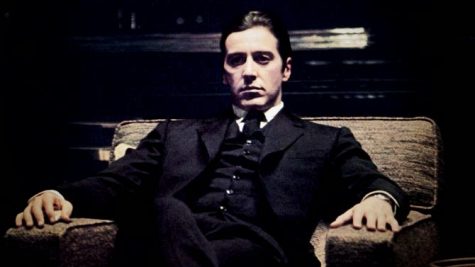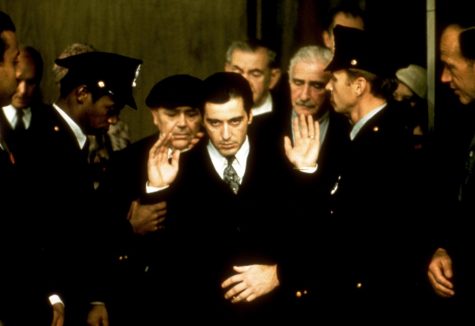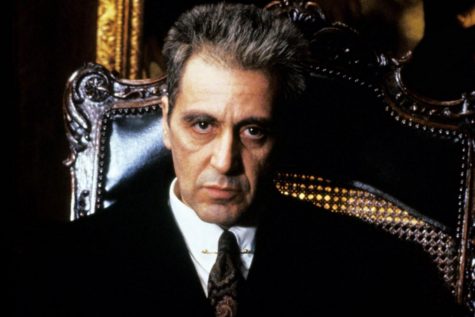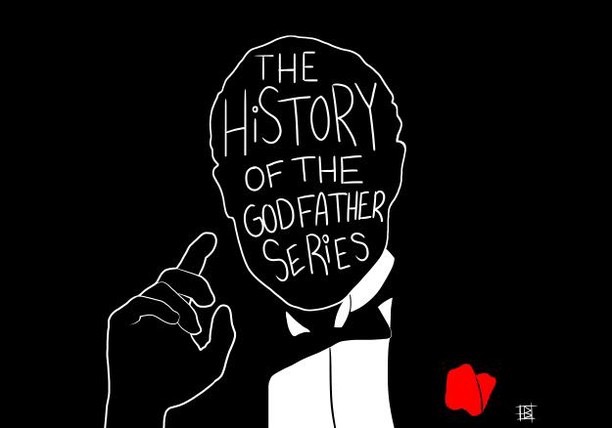The History Of “The Godfather” Series
Instead of simply giving you my thoughts on each of the three entries, let’s revisit and discuss the history of “The Godfather” series.
This year, audiences and critics will be seeing the resurgence and long-awaited return to one of the greatest actors of all time: Al Pacino. One of the most famous method actors is due to appear this year in Quentin Tarantino’s “Once Upon A Time In Hollywood” and Martin Scorsese’s “The Irishman.” He played some of the most iconic characters and appeared in some of the greatest films in cinema; from the cult classic “Scarface” to the action-packed 90s flick “Heat.”
However, none of these films come close to what many have praised as some of the greatest films of all time: The Godfather Trilogy. As credited as one of the greatest villains of all time, Pacino portrayed Michael Corleone throughout all three films. Instead of simply giving you my thoughts on each of the three entries, I find it more fascinating and interesting to discuss the history of how one of the greatest cinematic trilogies came to be. So, sit back and relax. And let’s revisit and discuss the history of “The Godfather” series.
“The Godfather”
The story begins in 1967. The first film of the series was based on Mario Puzo’s crime novel of the same name. The novel had remained on The New York Times Best Seller list for 67 weeks and sold over nine million copies in two years. Head of Paramount Pictures at the time Robert Evans met with Puzo and offered him a $12,500 deal for the 60-page manuscript entitled “Mafia” after Mario urgently needed $10,000 to pay off gambling debts. In March 1967, Paramount announced their intentions to develop a film based on Puzo’s book for the price of $80,000 with hopes to have it released on Christmas Day in 1971 according to Vanity Fair.

Marlon Brando portrays Don Vito Corleone in the first entry of the series. This photo was from the first film and is considered one of the most iconic scenes in cinema history.
Evans wanted the picture to be directed by an Italian American to make the film “ethnic to the core.” At the time, Paramount’s latest mafia based movie, “The Brotherhood,” was a box office bomb. Evans states the reason for its failure is because of its almost complete lack of cast members or creative personnel of Italian descent. One of the most famous filmmakers of all time, Sergio Leone, was Paramount’s first choice to direct the film. Leone turned down the option and proceeded to work on his own gangster film which would later be known as “Once Upon A Time In America.” Enter Francis Ford Coppola.
Initially, Coppola turned down the job because he thought the novel would be based on as “pretty cheap stuff.” At the time, his studio known as American Zoetrope owed over $400,000 to Warner Bros. for budget overruns with George Lucas’s “THX 1138.” Coupled with this and his poor financial standing, Coppola then reversed his decision and was officially announced to be the director of the film on Sept. 28, 1970.
For the role of Don Vito Corleone, Mario was the first to show interest in having Marlon Brando play the role. He even went out of his way to send Brando a letter stating that he was the “only actor who can play the Godfather.” Despite his wishes, the studio was against having Brando due to the failures of his recent work at the time and his short temper. They pushed for Ernest Borgnine for the part. After months of debate between Coppola and Paramount, Brando was ultimately chosen for the role. A role that would go down in cinema history as one of the most iconic performances of all time.

Al Pacino portrays Michael Corleone throughout the series. This character would become one of the most iconic film villains of all time.
The casting of Michael Corleone was a complicated one. Nearing the beginning of filming, the casting of this role was not yet finalized. Paramount executives wanted a popular actor at the time to play the role, either Warren Beatty or Robert Redford. Evans wanted Ryan O’Neal to receive the role because of his recent success with “Love Story.” Coppola’s eye for the role was none other than Pacino. For Coppola, he wanted an unknown actor who looked like an Italian-American. However, Paramount executives found Pacino to be too short to play the role. Other famous actors such as Dustin Hoffman, Martin Sheen and James Caan also auditioned for the role. Coppola still pushed for Pacino to play the part and eventually Evans conceded. This would as well go down as one of the most iconic performances of all time.
The film premiered in New York City on March 14, 1972, almost three months after its planned release. Before it premiered, it had already made $15 million from rentals from over 400 theaters. It became a blockbuster and broke tons of records to become the highest grossing film of 1972. It received critical acclaim and has been referred to as one of the most influential films of all time. The film went on to receive 11 nominations at the 45th Academy Awards; winning Best Picture, Best Actor for Brando and Best Adapted Screenplay.
Development for the sequel was well underway, and only two years later, in 1974, they would release what many say to be one of the greatest sequels of all time.
“The Godfather Part II”
After the massive success of the first film, the sequel went right into active development. Coppola’s idea for the sequel would be to “juxtapose the ascension of the family under Vito Corleone with the decline of the family under his son Michael,” The director has stated he has always wanted to adapt or write a screenplay involving father and son at the same age. The film would be presenting parallel dramas; one picks up with the current story of Michael Corleone and the story of a young Don Vito Corleone. This would become one of the first films to be presented as both a sequel and a prequel at the same time.
Several actors from the first film didn’t return for the sequel; most notably Brando. He initially agreed to return for the birthday flashback sequence, but the actor felt mistreated by the board of Paramount. Because of this, he failed to show for the single day’s shoot. The person cast to portray the young Don Vito Corleone was none other than Robert De Niro.

Michael Corleone faces hardship within his family in the second entry of the trilogy. The once good man has now turned and became cruel.
The film premiered once again in New York City on Dec. 12 and released worldwide on Dec. 20, 1974. What many people probably don’t know is what is now considered one of the greatest sequels of all time was not loved when first released. The film was first met with very mixed responses. Some people thought it was too long or dragged out while others say it was a worthy follow-up from the first film. Over the years, the film has been analyzed and discussed amongst film critics and moviegoers. Now, it has received a huge cult following and is considered a remarkable piece of work. The film went on to receive nine nominations at the 47th Academy Awards; winning Best Picture, Best Director, Best Supporting Actor for De Niro, Best Adapted Screenplay and Best Art Direction. This makes it the only series in cinema history where the original and the sequel both won Best Picture.
This would be the last time we would see Michael Corleone on the big screen for a little while. But then came the year 1990.
“The Godfather Part III”
In the year 1979, writer Dean Riesner created the first draft to what would become the final chapter of the series. The original draft centered around Michael’s son, Anthony, and the rest of the Corleone family, who find themselves involved in a plot to assassinate a Central American dictator. Almost none of these elements made it to the final product. Coppola has stated that he had no intention to create a third film. He felt that the first two films had the complete story of the Corleone family. With wanting to keep his themes and storyline intact, Coppola rewrote the entire script. And 16 years later, the third and final chapter of the saga was officially made.

Pacino returns to play his most iconic role as a weathered and damaged figure. The third film brought closure to one of the greatest trilogies of all time.
The film premiered in Beverly Hills on Dec. 20, 1990, and released worldwide on Christmas Day of 1990. The reactions from the third were the worst of the series. Many people praised most of the performances and the sense of direction. But, the main point of criticism and what many say almost killed the third chapter comes from one single individual: Sofia Coppola. The daughter of the director has been called not only the worst aspect of the third entry but the worst thing of the entire saga. Many state that she was what ultimately destroyed the third and final entry of the series. She was criticized so much that she quit acting after this film and went on to become a very successful filmmaker. Her most notable work came in the form of 2003’s “Lost In Translation.” Even with all its criticism, it still ended up earning seven nominations at the 63rd Academy Awards; which included Best Picture, Best Director, and Best Supporting Actor for Andy Garcia. This is the only film of the series where Pacino was not nominated for an Academy Award.
As you can see, there is a lot of rich history with this series being brought to the big screen; from its highs and lows. Even though the series had its bumps along the way, it is still considered by many, and for myself, as one of the greatest trilogies of all time. It’s a masterfully well-done series with some incredible filming techniques and has some of the most iconic performances in cinema. If you haven’t seen this series yet, I hope this read may have convinced you to revisit the past and see some of the greatest films of all time.


